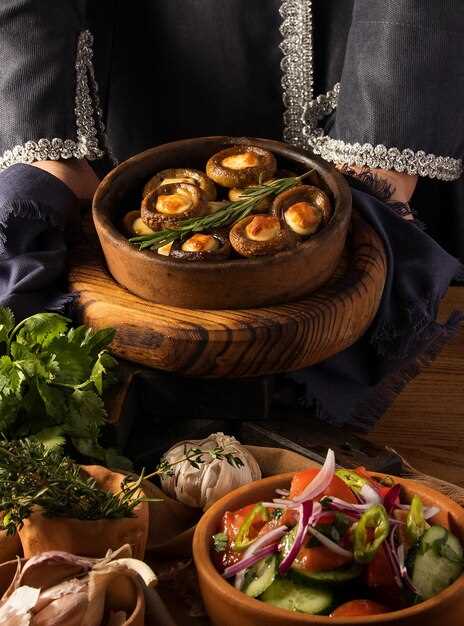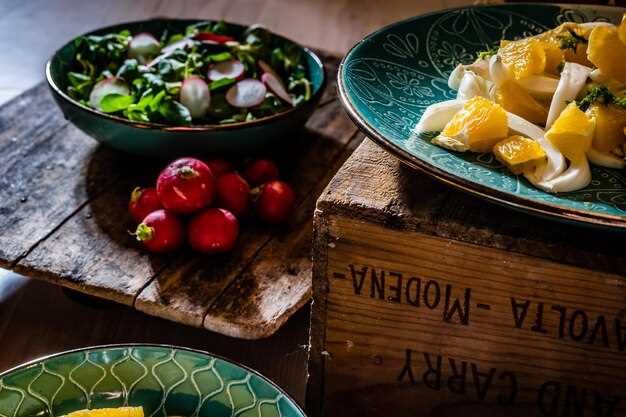Start with a real beet borscht served hot, a generous serving of sour cream, and you’ll understand Moscow’s palate already. These red-hued soups ground your taste in century-old techniques and show how simple ingredients become fragrant, soulful meals in the city’s cafes and markets.
From herb gardens to the market floor, these ingredients start in small farm plots and travel to Moscow kitchens. For the evening fish option, look for fresh fillets and smoked varieties; a small serving of smoked fish on rye pairs well with Okroshka in summer. The floor of Danilovsky Market has stalls with pickles and seasonal greens, perfect for vegetarian meals as well.
This these ten dishes include borscht, pelmeni, pirozhki, beef Stroganoff, okroshka, herring under a fur coat, blini with caviar or smoked fish, shchi, golubtsy, and kulebyaka. Some pies feature a spicy kick from pepper and horseradish. For each, note a reliable serving size: pelmeni 8–10 pieces, pirozhki 1–2 per person, blini stack 5–6, and kulebyaka roughly 500 g when shared as a main course. For vegetarian options, try beet salads or veggie pelmeni–these exist and taste robust.
Plan an itinerary to pace your meals: day one focuses on beet soups and dumplings; day two brings beef Stroganoff and fish dishes; day three ends with blini and kulebyaka. This timeread plan helps you fit the 10 dishes into a Moscow visit without rushing, with a graceful flow from floor to table. Some kitchens blend french techniques into doughs, yielding light maxs pastries to accompany savory pies.
Ask locals for the best state-run canteens and privately owned eateries; reserve tables for peak dinner hours; and keep notes to optimize a future itinerary. These dishes reveal Moscow’s real culinary pulse and invite you to take a taste of its history.
Practical Moscow Food and Travel Plan
Enter a traditional Moscow cafe at dawn and order crepes with cottage cheese and seasonal fruits for breakfast. This quick start sets a clear course for a practical Moscow food and travel plan.
timeread: 6 minutes. Morning route: enter the historic center near Red Square, walk between the Kremlin walls and old merchant lanes for about 3–4 km, then stop at a century-old canteen for borscht and a garlic-seasoned dish.
Lunch options: several dishes to try include pelmeni, beef stroganoff, Olivier salad, borscht, and syrniki. Mostly, share portions to keep meals light while you continue exploring. Pair with local wines when offered. This covers everything you need for a balanced day.
Afternoon market crawl: enter Izmailovsky or a central food hall to sample fruits, fresh bread, and several ready-to-eat dishes; mostly you will find distinctive flavors and a touch of tradition in each stall, and you can compare other stalls for value.
Evening plan: close with a light meal near the river, order wines and a non-alcoholic option; this keeps your energy balanced for a relaxed night stroll. If you stay in a place with a kitchenette, a quick bit of cooking can save time.
Borscht and Shchi: where to taste authentic beet soups in Moscow
Visit Café Pushkin in central Moscow for a traditional borscht and shchi; this is where you should start if you want a beet soup prepared with care. The beets come from a local farm, giving a deep color and natural sweetness that muscovites expect. The dining room sits on a polished floor, and windows overlook the lively streets, where crowds gather for an evening meal and a chat about the city’s flavors.
Traditionally, borscht commonly features beets, cabbage, potatoes, and a dollop of sour cream; the broth achieves a bright, earthy color, and the garnish of pickles adds a crisp contrast. The case-by-case approach to seasoning ensures each bowl reflects the chef’s influence while staying true to the recipe you’ll find in Moscow’s past kitchens. Be prepared for a slightly sweet finish that comes from careful simmering and the marker of traditional practice.
Shchi arrives with a hearty body thanks to rye flour thickening, a sign of regional technique that many muscovites cherish. In this region, cooks blend mushroom stock for depth, then finish with sour cream and herbs. It tastes like winter in a bowl and pairs well with dark rye bread. Another note: the color stays warm, the texture silky, and the aroma of cabbage lingers in the room.
For another perspective, Dr. Zhivago or Mari Vanna offer familiar takes on borscht and shchi that locals discuss after leaving the restaurant. In these places, the staff explain the influence of city history on the recipes, and muscovites often compare whether the beets come forward or stay subtle. If you plan to visit during busy weekends, you should book ahead to secure a table in the main dining room.
In market stalls and casual canteens, you’ll taste soups prepared on the spot, using beets from nearby farms and pickles on the counter. The floor of these stalls is plain, and the aroma draws locals and visitors alike. These options show how the classics travel from region to region, and you can count on a straightforward, comforting bowl that mirrors the city’s past.
Where to go depends on your plan: if you aim to explore the central streets, start with a restaurant on Tverskaya or near the Kremlin square; otherwise, seek a quiet canteen in a neighborhood away from crowds. Timeread tips help you time visits to avoid lines, but you should still expect a lively atmosphere in busy districts. If you’re shopping for souvenirs, bring a chemodan and stash a jar of pickles or a souvenir beet salt for the journey home. This is how you build a Moscow beet-soup itinerary that count as a true local experience.
Pelmeni: fillings, stalls, and best places to try them
Begin at Danilovsky Market, where a chef behind the counter rolls the dough by hand. The market is open daily, and moscows usually flock here for a quick, satisfying lunch. Between the rows you’ll find numerous stalls with different fillings and broths, so read the labels and compare aromas before you decide which to try first.
Fillings to look for, in most cases, include:
- Beef and pork mix – classic and balanced, usually the go-to for a reliable bite; some stalls use beef steak mince for a meatier texture.
- Lamb and pork – richer, with bright herb notes that stand up to a savory broth.
- Chicken and mushroom – lighter, softer on the palate, great for a milder pairing with broth.
- Vegetarian options such as potato and cheese – such “such” fillings exist at several stalls, offering a welcome change of pace.
- Fish or seafood variants – less common but worth trying at places that emphasize regional seafood styles.
Such variety comes from how vendors source meat and how the dough is prepared. In many cases, the dough is rolled thin and stretched past a point where the wrappers nearly melt in your mouth. This is where you can judge quality: look for a translucent skin, a short boil time, and a broth that carries the meat’s flavor without overpowering it. If a stall emphasizes the cooking method, you’ll often hear them talk about a light simmer versus a vigorous boil, which changes the texture and taste in a case-dependent way.
Stalls to choose matter as much as fillings. At Danilovsky Market, several stalls pride themselves on handmade dough and cleaner labels. Ask the vendor about broth type (clear vs. rich) and whether the pelmeni are boiled or briefly steamed before serving. Such questions give you a sense of care and cooking philosophy, and they help you pick the right option for your mood after a busy morning.
Best places to try them, in practice, fall into three categories. First, the Danilovsky Market cluster itself, where the open-air setup and high turnover keep the pelmeni fresh and the flavors honest. Second, traditional cafés in central districts that have kept a classic approach to pelmeni for decades, often serving broth with a spoonful of herbs and a side of bread. Third, modern pelmeni studios and casual eateries that experiment with fillings and plating, offering quick service for a busy day in the city. In all cases, you’ll find numerous options, and you can plan a small tour to sample at least three different styles in one afternoon.
Pairing tips for the best experience: order the pelmeni in broth to appreciate the balance of seasonings, and consider a raspberry drink or a simple tea between bites to refresh the palate. If you’re hungry for a longer tasting, read the menu and ask for a tasting set; several stalls will offer a mini-taster that lets you compare fillings without committing to a full plate. After you finish, note which region influences the seasoning and which cooking method you preferred, because such observations make future visits more efficient and enjoyable. In case you wonder about the cultural context, pelmeni belong to a long tradition of home cooking that travels well through mosсows, where markets and cafés keep this period alive for locals and visitors alike.
Bottom line: start with a classic beef-pork pelmeni, then explore lamb and chicken variants, and don’t miss the rolled dough quality and the broth’s clarity. The best experience comes from visiting several stalls between market sections, and if you’re short on time, a single well-chosen stall can still give you a strong sense of why pelmeni endure as a favorite dish among moscows and guests alike.
Beef Stroganoff: classic version and modern twists in Moscow restaurants
Choose a classic fillet Stroganoff with a velvety ragout and sour cream, and enter Moscow’s dining scene by starting in hidden canteens along a fashionable boulevard.
The classic version centers on a tender fillet, cut into thin strips and seared briefly to stay juicy. Mushrooms and onions fold into a cream-rich ragout, brightened with a touch of mustard and paprika, and finished with sour cream. Traditionally it sits on buttered noodles or mashed potatoes, with a simple side of fresh garden herbs. This tradition remains the baseline many restaurants reference when crafting their own twists.
Take note of how each twist changes texture and aroma, so you can choose the version that fits your mood.
In fashionable Moscow restaurants, modern twists appear alongside the standard recipe. Here’s what you’ll encounter and how to choose:
- Classic technique with a twist: keep the fillet, but finish the ragout with a wine reduction and a mushroom purée to deepen the aroma.
- Texture play: add a thin, crisp crust or a puff pastry lattice on top for a fire-breathing visual against the creamy sauce.
- Five wines tied to the dish: a selection of five wines accompanies the plate–two whites, two reds, and a versatile dessert style–so you can compare how each pairing shifts the balance.
- kvass and kvas as beverages: many spots offer kvass as a non-alcoholic option and kvas as a refreshing fermented alternative to water.
- Garden accents: dill, chives, and tarragon elevate the sauce, with a touch of citrus zest brightening the finish.
- Where to try: look for hidden canteens behind a front of a boulevard, offering a unique selection that stays true to the cuisine’s tradition.
- Pies and sides: savory pies or pastry cradles hint at the home-cooked vibe of old Moscow gardens.
- Going beyond the classic: expect ragout variations with wild mushrooms, smoked paprika, or horseradish to refresh today’s flavor palette.
- Hidden gems: seek out places with quiet, garden-like courtyards and casual service that invite you to take your time.
Blini and Syrniki: pancake breakfasts and sweet treats you can’t miss
Try five blini with thick sweet cheese and jam, then finish with syrniki–creamy cheese pancakes dusted with sugar. This pair proves Moscow breakfasts can be both comforting and exciting, a choice many people keep returning to.
Find them along petrovka and other streets, in shops near ulitsa, and around tsums. In Moscow, numerous cafes offer both dishes, and the walls of historic buildings host long queues. The number of venues has grown; american travelers often find the portions satisfying and the flavors well-balanced. Crowds form at popular spots, especially around tsums and petrovka.
For syrniki, toppings like honey, raisins, or a dollop of sour cream highlight the cheese. For blini, try both sweet and savory options: roll them with smoked pork fillet and dill, or serve with butter and jam. Either way, tasting notes reveal the contrast between warm centers and crisp edges, and help you compare textures. Some stalls also offer pork cutlets on the side, with spices to deepen the flavor. A cold beer or tea balances the richness and provides an excellent complement.
To maximize flavor, visit a shop that offers a tasting flight: a small plate of blini and syrniki to compare textures. Between bites, ask staff about cheese blends and spice accents; their recommendations help you move from a simple sweet to a richer savory experience. The final choice comes down to mood. Only the best places keep the classics straightforward: fluffy centers, delicate rims, and a crumb that has been kept light. For price, expect 200–350 rubles per portion in mid-range spots, with premium options near central streets.
| Item | Where to try | What to order | Price range |
|---|---|---|---|
| Blini with thick cheese and jam | Petrovka area cafe | Five blini, jam, sour cream | 200–320 RUB |
| Syrniki with honey | tsums-adjacent shop | Syrniki, honey or sour cream | 250–350 RUB |
| Blini with smoked fillet | Ulitsa cafe near the walls | Blini, smoked pork fillet, dill | 300–420 RUB |
| Savory bites: pork cutlets on blini | Market stall near petrovka | Pork cutlets, spices on a stack | 250–380 RUB |
Olivier and Herring Under a Fur Coat: ordering traditional salads and pick-me-ups
Start with Olivier and Herring Under a Fur Coat as your traditional salads, then pair them with a chilled kvas. This combo anchors Moscow canteens and cafés, mainly beloved by locals and tourists alike.
For Olivier, specify potatoes and eggs to shine through, and choose pork if you crave classic heft or opt for chicken for a lighter option. The dish builds a little ragout-like depth where the layers meet, and pickles add a bright contrast that keeps the palate awake.
Herring Under a Fur Coat layers beets, potatoes, onions, and herring, with eggs as a crowning touch in many kitchens. It’s ancient comfort food that travels well in canteens everywhere, and you’ll often find it served in generous portions for rubles at the counter.
Ask for a side of tomatoes or cheese to refresh the plate between bites, especially if you start with Olivier. These toppings are inexpensive and available in most cafés, giving you a simple way to vary textures without leaving the table.
Finish with crepes y raspberry jam for a sweet counterpoint. Crepes appear as a common café staple, and you can order them plain or with cheese, a tiny treat after a heavy meal.
Thoughtful details help you enjoy yourself: you can mention crab as a playful twist in some regional salads, and you’ll often find canteens serving a little crab salad as a starter. If you’re mindful of budget, watch the rubles; portions are generous, and the value is excellent in many spots.
Thus, culture in Moscow’s food scene starts with simple ingredients–potatoes, eggs, tomatoes, cheese–and grows into a set of comforting, satisfying salads. Yourself, you can order, point, and enjoy the rhythm of the café, the quiet floor between tables, and the warm staff who help you navigate the menu, although language barriers rarely obscure the smile you’ll receive when the salads arrive.

 10 Traditional Moscow Dishes You Must Try">
10 Traditional Moscow Dishes You Must Try">

 Currency and Shopping – Practical Tips to Save Money Online">
Currency and Shopping – Practical Tips to Save Money Online">
 Bunker-42 on Taganka – Cold War Museum in Moscow">
Bunker-42 on Taganka – Cold War Museum in Moscow">
 Learn Russian – Essential Guide to Alphabet, Grammar, and Vocabulary">
Learn Russian – Essential Guide to Alphabet, Grammar, and Vocabulary">
 Tretyakov Gallery Ticket Prices and Opening Hours in 2025">
Tretyakov Gallery Ticket Prices and Opening Hours in 2025">
 St. Petersburg Cathedrals – Tickets & Schedules | Visiting Guide">
St. Petersburg Cathedrals – Tickets & Schedules | Visiting Guide">
 Open-Air Museum Monuments of Moscow – Discover Historic Outdoor Exhibits">
Open-Air Museum Monuments of Moscow – Discover Historic Outdoor Exhibits">
 Lenin’s Mausoleum – History, Architecture, and Symbolic Legacy">
Lenin’s Mausoleum – History, Architecture, and Symbolic Legacy">
 Moscow Sheremetyevo SVO Airport Guide – Flights, Terminals & Transport">
Moscow Sheremetyevo SVO Airport Guide – Flights, Terminals & Transport">
 Moscow Attractions Opening Hours 2025 – Plan Your Visit">
Moscow Attractions Opening Hours 2025 – Plan Your Visit">